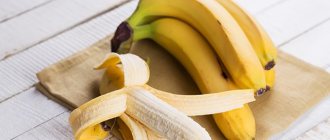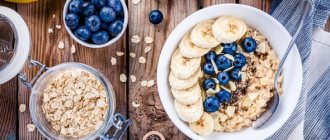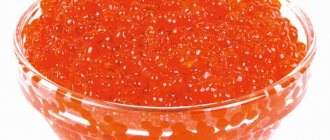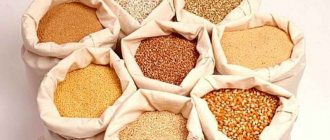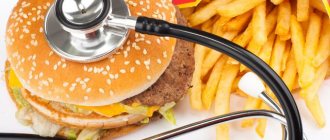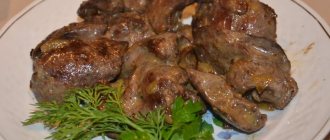Is it possible to eat millet if you have type 2 diabetes?
Millet can be eaten regardless of the specific type of diabetes , since cereals are completely harmless for this disease. However, the advantage of using it for type 2 diabetes is that it does not contribute to excess weight gain, and this is precisely the category of people most prone to obesity.
The main advantage of consuming millet for diabetes is that it helps normalize the body's production of insulin. If you introduce porridge into your diet during therapeutic treatment, you can achieve an amazing effect and forget about the illness for a long time.
Did you know? When treating diabetes, folk healers recommend grinding millet in a coffee grinder and taking 1 tbsp daily. spoon, washed down with warm low-fat milk.
Three basic rules for choosing products
All products, including grains and cereals, for the diabetic menu are selected according to three main criteria:
- Glycemic index (GI). Allowed food, indexed from 0 to 30 units. Limited products are products with GI from 30 to 70 units. A higher glycemic index is not acceptable for diabetics.
- Energy value. The diet of diabetics should not contain high-calorie foods. This is especially true for patients with type 2 diabetes who are obese.
- Content of nutrients in a dish (product). Simple carbohydrates (confectionery and other sweets) are eliminated from the menu. The emphasis in nutrition is on protein foods, slow carbohydrates and fiber.
Diabetics should control portion sizes. Overeating leads to gaining extra pounds. In addition, an important parameter for type 1 diabetes is the number of bread units (XU) contained in products. Based on XE, the correct dose of insulin is calculated.
Composition and calorie content
Of all the variety of cereals, millet occupies a special position, since its chemical composition contains many useful biologically active substances.
The most significant are:
| vitamin B6 | contains in large quantities (in buckwheat it is 2 times less), helps speed up metabolism, as a result of which excess fat is quickly burned |
| amino acids | act as a building material for cellular structures and muscle fibers |
| carotene | strengthens the nervous system, reduces the risk of contracting infectious diseases |
| vegetable fats | ensure the body's absorption of vitamins and carotene |
| niacin | necessary for the metabolism of carbohydrates and fats, reduces cholesterol levels, participates in providing cells with oxygen |
| silicon | helps form bone tissue, has a positive effect on the functioning of the heart and organs of vision |
| phosphorus | necessary for the formation of bone tissue |
| cellulose | good for the digestive system |
| magnesium | “takes care” of the functioning of the heart and blood vessels |
The glycemic index of millet is quite low, about 40 units, so the product does not cause hunger. Despite the fact that during heat treatment this indicator may increase, one way or another it will not exceed 60 units.
The calorie content of millet is 378 kcal. At the same time, 100 g of cereal contains 4.2 g of fat, 11 g of protein, and 73 g of carbohydrates, which indicates the nutritional value of the product and its ability to saturate the body with energy, which a sick person especially needs.
Important! The chemical composition of millet does not include gluten, so the product does not cause an allergic reaction.
Diabetic rules for cooking and eating porridge
In order not to provoke an attack of hyperglycemia (increased glucose levels in the blood), porridges for diabetics are prepared in compliance with certain conditions:
- the basis is water or milk with a fat content of no more than 1.5%;
- It is prohibited to add sugar; it is replaced with fresh or frozen berries, dried fruits (except raisins), and nuts;
- it is necessary to wash the cereal to remove excess starch;
- butter is allowed in the compensated stage of the disease, no more than 5 grams. per serving (diabetologists recommend replacing tea oil with 10% sour cream);
- It is better to eat viscous porridge for breakfast;
- It is not recommended to cook oatmeal; they should be brewed with boiling water and left to infuse;
- the volume of the dish cannot be exceeded (a single serving for type 2 diabetes is 200 grams, for type 1 diabetes it is calculated according to XE):
- cereals with a glycemic index of more than 40 are allowed only with stable glycemic compensation (you can lower the GI of the finished dish if you pre-soak the cereal, cook it al dente and cook it until ready, wrapped in a blanket);
- semolina porridge and hominy are excluded from the diet;
- you should choose whole buckwheat grains, unrefined oat grains or coarse oat flakes for cooking;
- Instant porridges should be eliminated from the menu.
As a side dish, cereal dishes go well with boiled (baked) chicken, turkey, and fish. Buckwheat and pearl barley go well with mushrooms. Recipes for making viscous porridges for diabetics differ from traditional recipes in the absence of sugar.
From boyar-style buckwheat porridge, you should exclude the brisket; do not fry vegetables (onions and carrots), but only simmer a little in olive oil. Millet porridge with pumpkin should be avoided, since the dish has a high GI.
On a note! Diabetologists recommend adding a tablespoon of bran to a serving of viscous porridge. This will help speed up metabolism and enrich the dish with minerals and vitamins.
What are the benefits of millet for diabetes?
Having examined the chemical composition of millet, we can say with confidence that the product brings considerable benefits. First of all, this concerns the presence of micro- and macroelements such as calcium, magnesium, zinc, which help speed up metabolism, as a result of which calories are quickly burned.
The content of complex, long-breaking carbohydrates in millet porridge ensures the absence of hunger for a long time, which is also very important for diabetics. In addition, millet gives energy to the body, making a person feel more cheerful and energetic.
- Also useful properties include the following:
- increasing immunity due to the high content of vitamins and minerals;
- stimulating the body's production of insulin;
- loss of appetite and loss of excess body weight;
- normalization of the functioning of the digestive tract;
- has a positive effect on the functioning of all organs and systems;
- the ability to cleanse the body of toxins and antibiotics.
How to choose the right one when purchasing
Experts recommend purchasing high-grade millet. This is explained by the fact that the grains in them are better purified and more nutritious. It is preferable that it be polished millet, which makes it easy to prepare a pleasant-tasting crumbly porridge, rich in vitamins and carbohydrates.
Also find out if you can eat mulberries if you have type 2 diabetes.
A crushed version is also available for sale, but the final product from it will be more viscous, although it has almost the same taste. Choose products in transparent packaging - this way you can evaluate the appearance and color. Determine whether there are any foreign impurities. Cereals can have shades from sand to bright yellow.
According to culinary specialists, it is from richly colored millet that the most delicious porridge is obtained.
Basic principles of the “diabetic diet”
The main goal of the diet is to control blood glucose levels. The correct diet plan for diabetics is based on two pillars.
We maintain balance in everything
Consume exactly the amount of carbohydrates that is necessary for normal functioning. This eliminates the possibility of glucose accumulation in the blood, which leads to a state of hyperglycemia. So, the main principle of nutrition for a person with diabetes is balance, which should concern both the amount of carbohydrates consumed and the ratio of proteins and fats.
We eat little, but often!
The second extremely important point when drawing up a diabetic diet is the principle of fractional nutrition. This means that the calculated amount of carbohydrates that can be consumed during the day cannot be eaten at once. Blood sugar levels are closely related to the nutritional pattern, and a one-time consumption of a daily dose of carbohydrates will lead to a sharp increase in glucose concentration, which will end in hyperglycemic coma. It is best to eat 5-6 times a day, consuming approximately equal amounts of carbohydrates at each meal.
By following these two simple rules, patients suffering from type 2 diabetes can refuse insulin therapy, and patients with group 1 diabetes can count on a reduction in insulin doses and normalization of their general condition.
How to store
It is better not to buy grain in large quantities. It contains fats that tend to oxidize quickly, as a result of which millet acquires some bitterness. Once you unpack the pack, pour the product into a ceramic or glass container. It must be completely dry and sealed tightly. Cereals should be stored in a dry, dark place. Under such conditions, the product will not lose its taste for 4 months.
Important! If during cooking the millet has lost its color or turned pale, it means that it is expired or was stored in improper conditions.
Rules and recipes for preparing porridge for diabetics
A person suffering from diabetes should cook millet porridge in water. As a last resort, you can use milk, but only low-fat milk. You cannot add sugar, but if you really want to sweeten the dish, you can add a substitute after consulting with your doctor.
It is best to cook porridge without additives.
Even 2 tbsp. l. Such a product, eaten daily, will significantly improve the condition of the body. Also sometimes pumpkin, which is a dietary product, as well as nuts or cottage cheese are added to the porridge. Before you start cooking, the millet needs to be sorted and washed, since even the most seemingly clean grain often contains fragments of husk.
Find out also about the benefits of sauerkraut for type 2 diabetes.
Without additives
This is the simplest cooking method, for which you will need millet (200 g), water and a pinch of salt (1/4 tsp). People suffering from type 2 diabetes are recommended to boil the cereal twice. First, whole grains are poured with cold water. Place the pan on low heat and bring the grains until half cooked.
Then the remaining liquid must be drained. Water (500 ml) is again added to the semi-cooked porridge, salted, put on fire, and, stirring continuously, brought to a state of complete readiness. The process lasts about 20 minutes, after which the pan must be removed from the heat, wrapped in a blanket and the food steamed for 2 hours.
With pumpkin
Pumpkin will give millet porridge a pleasant taste and aroma. This ingredient will help diversify your diet and, moreover, will also bring considerable benefits. The vegetable has a positive effect on visual acuity, intestinal microflora, stabilizes blood pressure, improves blood composition and improves immunity. In general, the benefits of this miracle vegetable are considerable. Therefore, it can be added to porridge.
To prepare you will need the following components:
- millet: 100 g;
- low-fat milk: 2-3 glasses;
- fructose: 2 tbsp. l.;
- vanillin: ¼ tsp;
- butter: 30 g;
- salt: ¼ tsp;
- pumpkin: 700 g.
Did you know? In the countries of India and Africa, millet began to be cultivated more than 7 thousand years ago.
Cooking porridge consists of the following steps:
- Pour milk into the pan. The recipe indicates 2-3 glasses so that everyone can choose the most suitable option for themselves - the more liquid, the more boiled the porridge will be. If you like a crumbly consistency, 2 glasses of milk is enough.
- Add the prepared millet, place the pan on low heat and, stirring, bring to a boil.
- Peel the pumpkin, cut into small cubes, and add to the porridge. Set the heat to the lowest setting on the stove and cook until the contents have completely thickened. All this time you need to stir the porridge, otherwise it will burn very quickly.
- Add fructose, vanillin, oil, salt. Stir, cover and remove from heat. At this stage, you can, if desired, add raisins or chopped dried apricots.
- Wrap the pan with porridge in a blanket and leave for 4-5 hours. You can prepare the porridge the night before. Then in the morning you will have a delicious breakfast waiting for you.
Video: delicious millet porridge with pumpkin
Cereals on the menu for diabetics
Before you start developing a daily menu, you need to find out what kind of cereals a person with diabetes can eat. Only cereals that meet the criteria of the diabetic food basket are allowed in the diabetic diet. In addition, cereals come in different varieties, which also needs to be taken into account when choosing.
Reference! During the cooking process, any cereal absorbs water, which reduces its energy value by 2-3 times.
Buckwheat
Buckwheat comes in two types: crushed and whole grain. In case of diabetes, preference should be given to the kernel. It contains a higher percentage of B vitamins, as well as the following micro- and macroelements:
- potassium and magnesium – are responsible for stable heart function;
- iron – prevents the development of anemia (anemia);
- calcium and phosphorus – support healthy bone tissue;
- zinc and manganese – promote the synthesis of natural insulin.
Buckwheat contains lysine, tryptophan, leucine, and arginine. These are essential amino acids that the body urgently needs, but is unable to produce on its own. The energy value of the kernel is 308 kcal/100 g. Buckwheat boiled in water without seasonings and salt contains 98 kcal/100 g.
In 100 gr. crumbly buckwheat porridge contains 17.1 g. carbohydrates or 1.4 XE. The glycemic index of buckwheat is 55 units, which is beyond the acceptable GI for diabetes. Therefore, it belongs to the category of restricted foods, that is, diabetics should not indulge in buckwheat.
It would be optimal to eat buckwheat twice a week. Buckwheat compares favorably with other grain crops with its high content of vegetable protein (13 g/100 g) and fiber (12 g/100 g).
Buckwheat is good for diabetics
Barley and egg
Pearl barley and barley groats are made from a common cereal crop, barley. Yachka is unpolished crushed grains, pearl barley is peeled grain, devoid of shell. Just like buckwheat, pearl barley and barley are rich in B-group vitamins and contain tocopherol acetate, otherwise known as vitamin E. Its direct purpose is:
- strengthening the immune system;
- increasing the strength of the walls of capillaries and large vessels;
- normalization of blood glucose levels;
- maintaining the skin's regenerative capabilities.
Since cereals are made from the same raw materials, their mineral composition is the same. The difference lies in the quantitative content of micro- and macroelements.
| Microelements | Macronutrients |
| iron, manganese, copper, selenium, zinc fluorine, molybdenum | potassium, phosphorus, calcium, magnesium, sulfur |
The calorie content of the egg is 313 kcal/100 g. Porridge with water contains 76 kcal/100g. The glycemic index of the product is 40 units. The energy value of raw barley is 324 kcal/100g, boiled - 109 kcal/100g. GI is 30 units.
Regarding bread units, per 100 gr. ready-made pearl barley or barley porridge in water accounts for approximately 1.83 XE. Regular consumption of barley cereals helps cleanse the digestive tract of toxins and the body as a whole of toxic deposits.
Semolina and corn
Semolina is a derivative of wheat. Compared to other cereal crops, semolina contains a minimum of dietary fiber and a maximum of carbohydrates. Semolina porridge is quickly processed by the body and causes a rise in blood sugar levels in diabetics.
The calorie content of cereal is 333 kcal/100 g, ready-made porridge – 99 cal/100 g. The glycemic index of porridge without sugar is 75 units. For diabetics, semolina belongs to the prohibited category of food products.
Semolina porridge contains phytin, a substance that interferes with the absorption of calcium and iron.
Corn porridge, otherwise known as hominy, is a filling and low-calorie dish. Raw cereal contains 328 kcal/100 g. In mamalyga – 92 kcal/100 g. Corn grits are rich in beta-carotene, vitamins B3, B5, B6, potassium and phosphorus. Contains arachidonic, linolenic and linoleic amino acids.
The disadvantage of hominy is its high glycemic index – 75 units. For diabetes mellitus, the product is not recommended. Corn flakes are not allowed in the diet. Their GI is 85 units, energy value ranges from 360 to 380 kcal/100 g. (depending on the manufacturer).
Linen
Flaxseed porridge is a dish with a unique chemical composition. It contains a large amount of Omega-3 polyunsaturated fatty acids. There is no need to add butter or sour cream to the porridge. The total fat content is 40 g/100 g.
The flax product is rich in proteins and has a significantly lower carbohydrate component than other cereals. In addition, flaxseed porridge is a leader in dietary fiber content. The vitamin complex is represented by:
- group of vitamins B;
- vitamin E;
- ascorbic acid (vitamin C) is a powerful antioxidant for strengthening the immune system and cleansing blood vessels of cholesterol.
Table of bread units for diabetics
Amount of micro- and macroelements (mg per 100g):
- potassium – 819.6;
- phosphorus – 647.4;
- magnesium - 395;
- calcium 257;
- iron 5.76;
- manganese – 2.52;
- zinc – 4.38.
The composition of nutrients determines the calorie content of the product - 298 kcal/100 g. But the glycemic index does not exceed 35 units. 2 tablespoons (heaped) contain 1 XE.
Oats
Oatmeal is prepared from whole grains or flakes - peeled oats. The vitamin and mineral composition of oatmeal is similar to buckwheat. During industrial processing of grains, cereals lose most of their valuable substances. For example, in terms of the amount of dietary fiber, Hercules oatmeal is inferior even to buckwheat.
In addition, the cereal contains increased carbohydrate content, therefore higher calorie content. Therefore, diabetic patients are recommended to cook porridge from unpeeled oats or the coarsest flakes. The glycemic index of cereals cooked in water is 40 units; when cooked in milk, the figure increases 1.5 times.
Important! Muesli is contraindicated for diabetes; its GI is 80-85 units.
Millet and wheat
These are two different products and should not be confused. Wheat groats are made from durum wheat, millet groats are made from purified millet grains. Wheat contains a large amount of fiber, vitamins B1, B2, B4, B5, B6, B9, potassium, magnesium and phosphorus.
The energy value of raw cereals is 341 kcal/100 g, ready-made wheat porridge is 111 kcal/100 g. The glycemic index of cereal does not exceed 45 units. One unit of bread contains 50-60 grams. cereals (depending on the variety). Considering that wheat boils a lot, a serving of porridge is 100 grams. does not exceed 1.3 XE.
Wheat dishes are available for diabetics due to their low glycemic index
Millet cereal is higher in calories - 378 kcal/100 g. The useful components of the product are vitamins A, E, B-vitamin complex, iron, magnesium, potassium, sulfur, calcium, fluorine, manganese, etc. The main valuable property of millet porridge is its ability to stimulate the production of natural insulin and regulate metabolic processes.
Endocrinologists recommend consuming millet porridge on a regular basis for prediabetes and diabetes. The glycemic index of cereals is 40-50 units. Millet can be cooked in water and 1.5% milk.
Rice
Diabetics need to be extremely careful with rice cereal. Plain white rice has a high glycemic index because it contains a lot of starch and simple carbohydrates. White grains should be avoided. For people with diabetes, brown (brown) and black varieties of rice with a GI of 50 units are allowed on the menu. In 100 gr. Ready-made rice porridge in water contains 2 XE and 110 kcal.
More information about peas and lentils
Peas and lentils are legumes recommended for consumption in diabetes mellitus. Legumes are rich in fiber, a healthy plant protein. Lentils and peas contain vitamins, amino acids, and minerals. Dishes made from legumes make you feel full for a long time.
According to the glycemic index, products belong to the permitted category (GI = 30 units). In terms of energy value, pea porridge contains 84.5 kcal/100 g, lentil porridge – 93 kcal/100 g. For bread units, the approximate content is 1 XE = 60g. ready dish.
